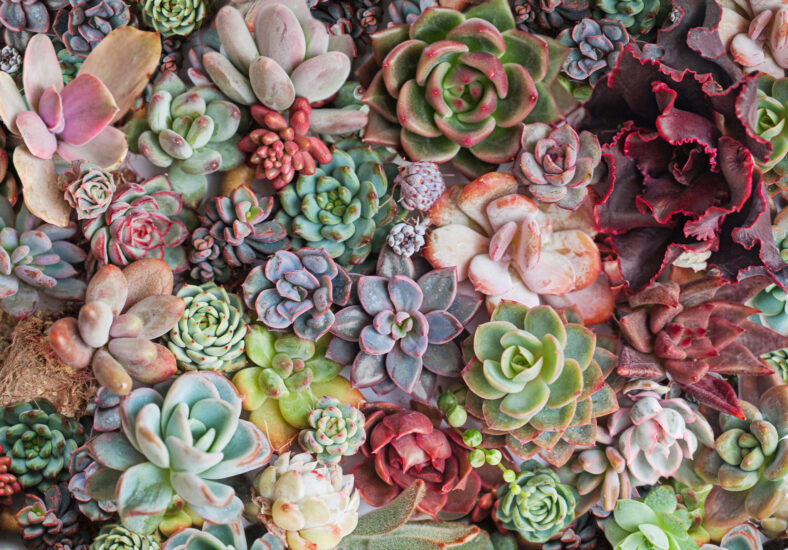How To Care For An Echeveria, A Low-Maintenance Succulent Prized For Its Rosette Shape

As succulents only continue to grow in popularity, echeveria plants have become a favorite among gardeners and interior design enthusiasts alike.
These stylish, fast-growing succulents are prized for their gorgeous rosette shapes, plump leaves, and vibrant colors that often resemble flowers.
Native to the arid regions of Central America, South America, and Mexico, echeverias belong to the Crassulaceae family and share care requirements with their succulent relatives, like sedum and kalanchoe.
They’re versatile and can thrive indoors or outdoors, whether as tabletop centerpiece accents, part of terrariums, or as stars of rock gardens and living walls.
Plus, their low maintenance needs and ability to store water in their thick leaves make them an excellent choice for busy plant parents.
If you’re ready to incorporate echeveria into your home or garden, here’s everything you need to know to help it flourish.
How To Care For Echeveria
First, echeverias prefer warm, dry environments and don’t handle cold temperatures or drafts very well. While average indoor temperatures and humidity levels are generally suitable for this plant, it shouldn’t be kept in places like bathrooms or laundry rooms, where humidity is higher. That’s because excess moisture can actually lead to root rot.
Most echeveria varieties are considered hardy in USDA zone 9a, meaning they’re able to tolerate winter temperatures above 50°F. However, in regions with freezing winters, it’s best to bring them indoors when frost is expected.

Sign up for Chip Chick’s newsletter and get stories like this delivered to your inbox.
This succulent will also need well-draining, porous soil to prevent extra moisture from accumulating around the roots.
Standard cactus potting mixes work well for echeverias, or you can create your own mix. Simply combine three parts of regular potting soil, two parts of coarse sand, and one part of perlite.
Otherwise, if you’d like to grow echeveria in garden beds, just make sure the soil drains well and has a slightly acidic PH of around 6.0.
It’s important to note that this succulent doesn’t need frequent fertilizing. In fact, over-fertilizing can even lead to fertilizer burn, so you should be cautious. Still, during the active growing season in spring and summer, occasional fertilizing can support its growth.
If you opt to fertilize, use a cactus and succulent fertilizer or a balanced 20-20-20 liquid fertilizer. Just be sure to dilute it two to four times more than the recommended strength. Additionally, for young plants, opt for a low-nitrogen fertilizer to avoid overstimulating their growth.
Next, when deciding where to place echeveria, keep in mind that it needs plenty of light to thrive, requiring at least four to five hours of bright, direct sunlight each day. Without enough sunlight, your plant may become leggy and might not produce flowers.
You can move your succulent outside during the summer to help it get more sunlight, but ensure you gradually acclimate it to outdoor conditions in order to avoid shock.
And while full sun is necessary, remember that intense afternoon rays can result in sunburn. A spot with some afternoon shade is helpful for protecting your echeveria during the hottest part of the day.

Last but not least, watering is the most important part of caring for echeverias. Similar to most succulents, they don’t need much water, but they shouldn’t be left too dry, either. If the leaves start to wrinkle, it’s a clear indicator that your plant needs a drink.
Yet, at the same time, it’s safer to under-water than over-water this plant since, again, excessive moisture can lead to root rot.
A good rule of thumb is to allow the soil to dry out completely before watering. Then, soak it thoroughly until water flows from your container’s drainage holes.
Depending on the size of your pot, this might be anywhere from half a cup to one full cup of water every seven to 10 days in the growing season.
Echeverias typically need more water in the summer and less in the winter, too. So, during the colder months, water your plant only enough to prevent the leaves from shriveling, or roughly once a month.
More About:Gardening





